RS Aggarwal Class 8 Solutions Chapter 11
RS Aggarwal Solutions for Class 8 Chapter 11 – Compound Interest PDF
RS Aggarwal Class 8 Maths Solutions Chapter-wise – Free PDF Download
The best way to practice the topics of the chapter and make sure you understand them is to use RS Aggarwal Class 8 Solutions Chapter 11 “Compound Interest.” This section of RS Aggarwal Class 8 Solutions Chapter 11 has 4 exercises with a total of about 63 questions. We have given step-by-step answers to all of the chapter’s exercises, which will help you figure out how to solve questions about compound interest.
In the past, you have learned about simple interests. In Class 8, you will learn how to use the basic formulas given in each chapter to figure out compound interest. Students test their knowledge of compound interest with RS Aggarwal. The problems in RS Aggarwal Class 8 Solutions Chapter 11 give you a chance to see how well you can solve problems.
Use Utopper’s experienced teachers’ RS Aggarwal Solutions for Class 8 Chapter 11 to find answers to your questions and doubts. Find out how the formulas for compound interest have been simplified and how to solve the problems in the exercises. Download this solution file and use it whenever you want to study this chapter.
In RS Aggarwal Class 8 Solutions Chapter 11, the exercises are based on the topics of simple interest and compound interest. In this chapter, you will also learn about terms like rate of interest, time period, per annum, and half-yearly. You have to figure out how much compound interest is charged for different lengths of time, such as one year, two years, three years, and so on. In some questions, you may also be asked to figure out how much something is worth after interest has been added.
Utopper is a website where students can get free Reference Book Solutions and other study materials like Revision notes, Sample papers, and Important Question class 8. Science and Maths will be easier to learn if you have access to RS Aggarwal Solutions for Class 8 and solutions for other courses.
Click Here – To Buy/Purchase RS Aggarwal Class 8 Solutions Online
RS Aggarwal Class 8 Solutions Chapter 11 – Compound Interest







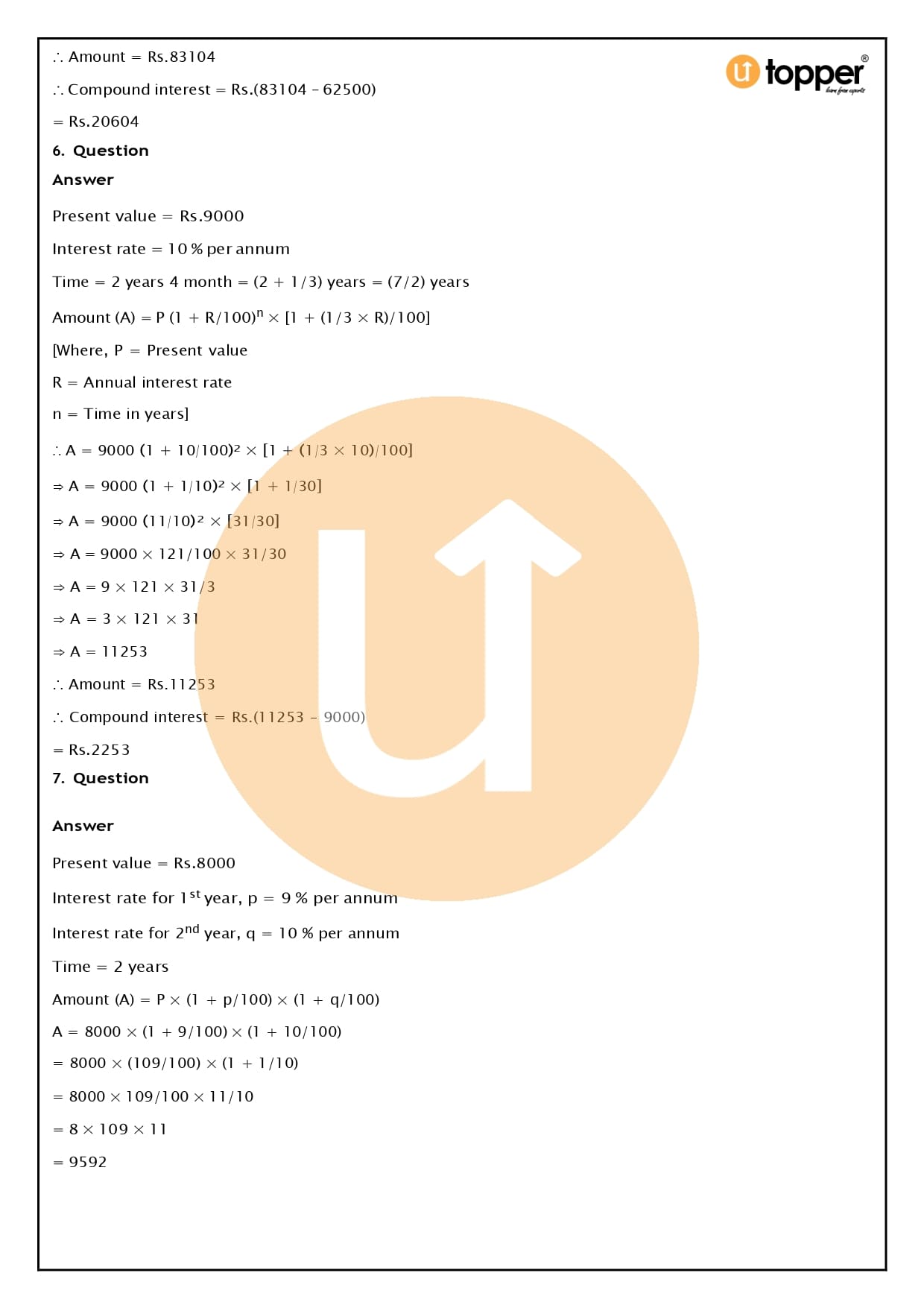
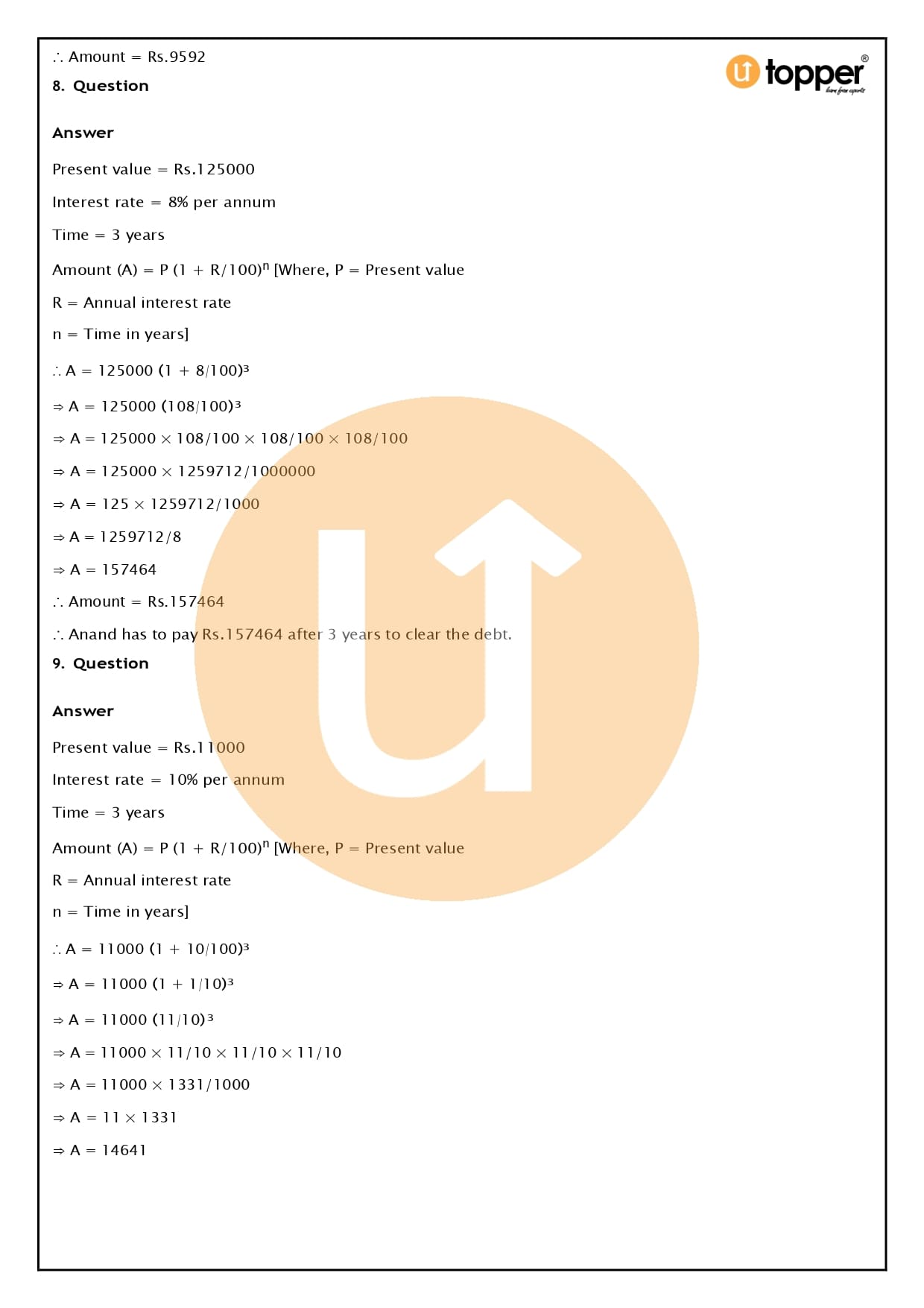














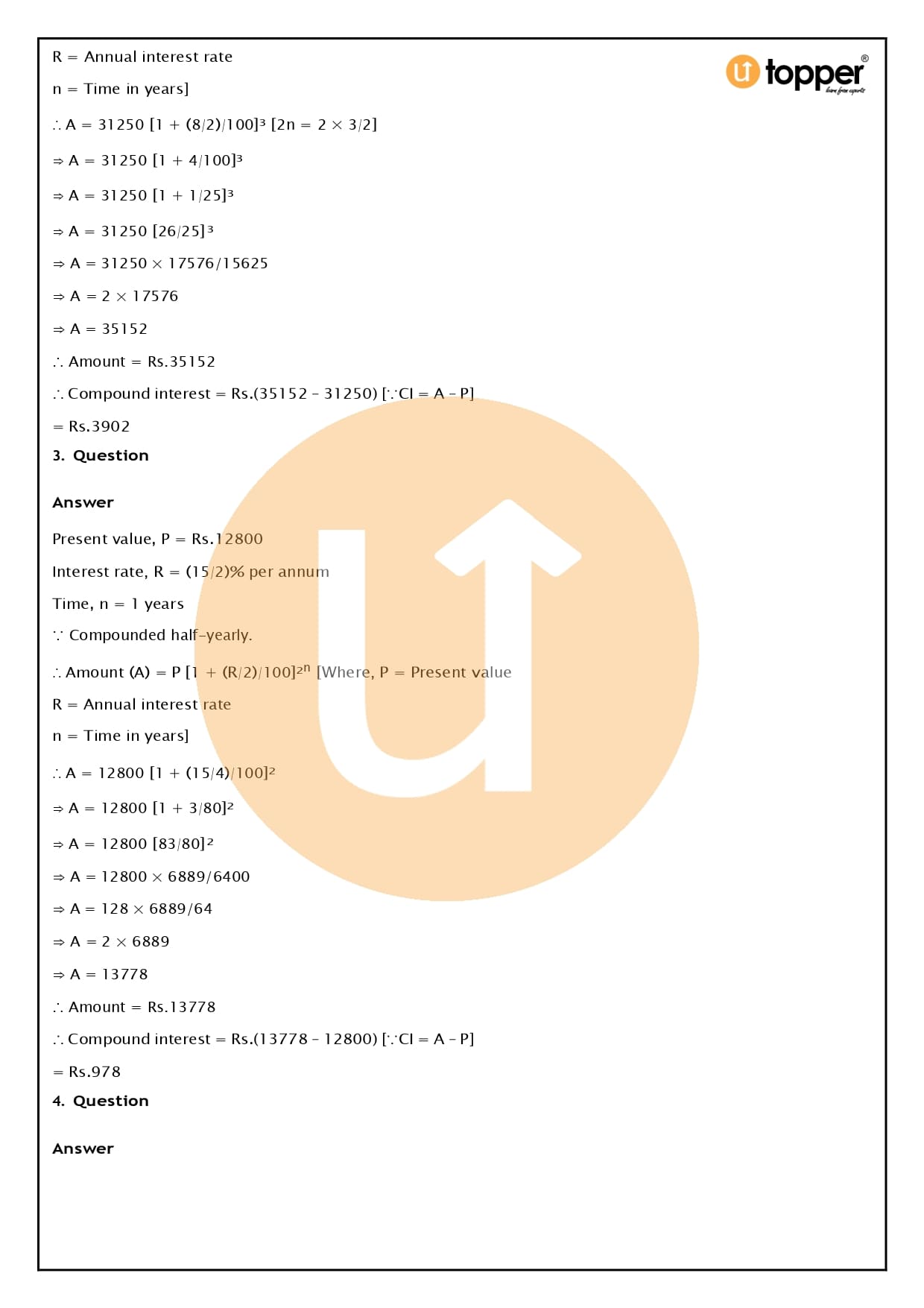


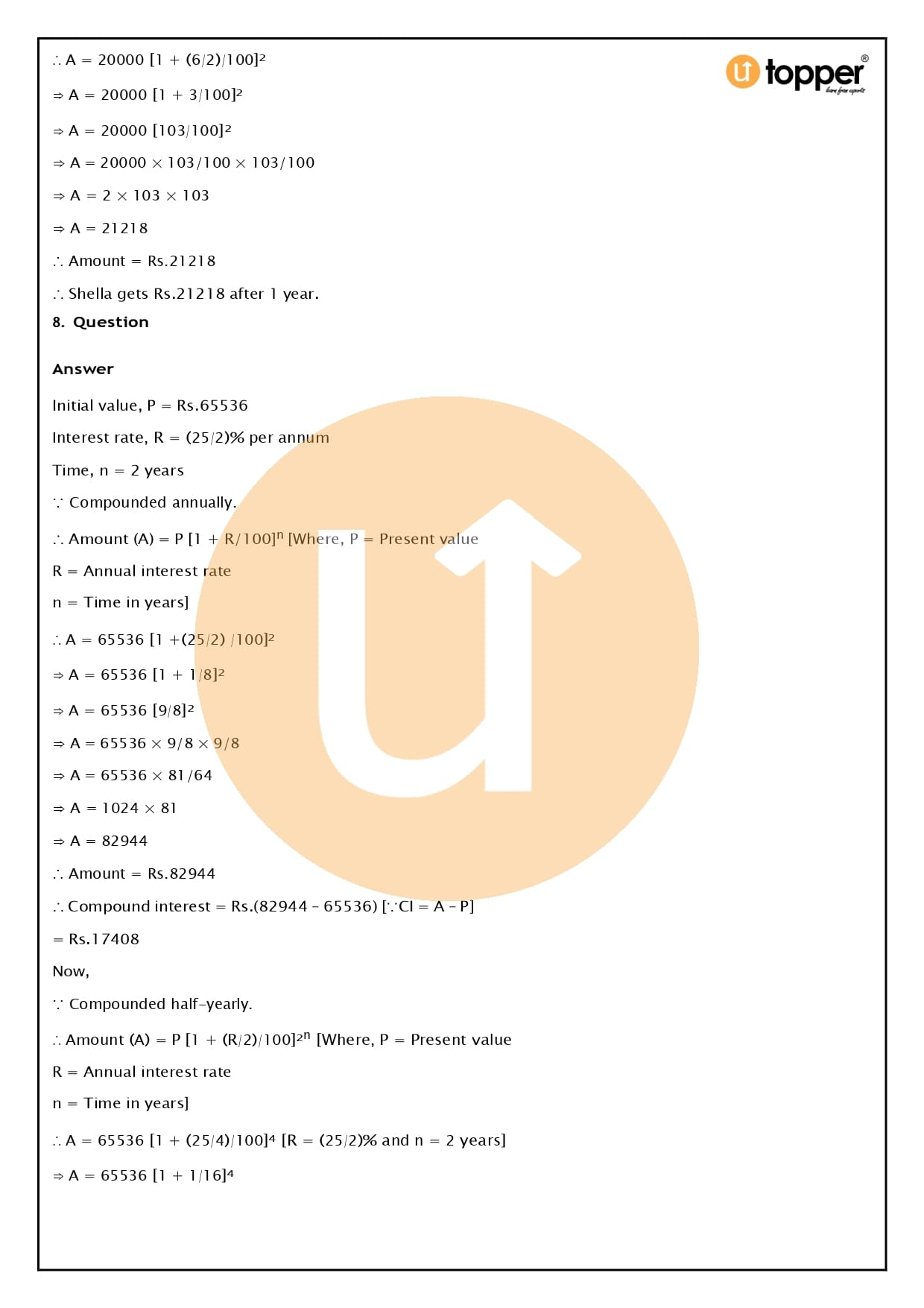
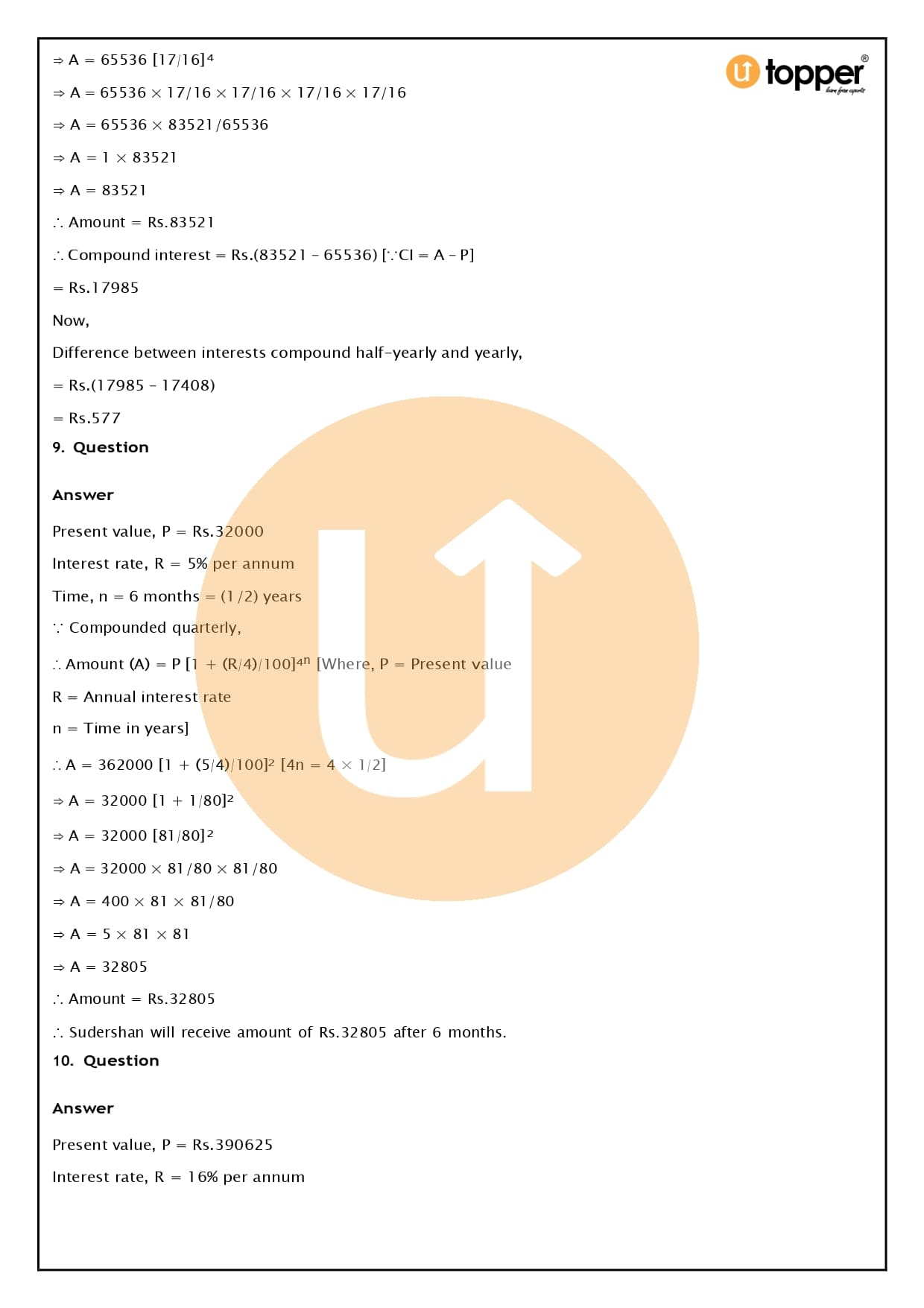



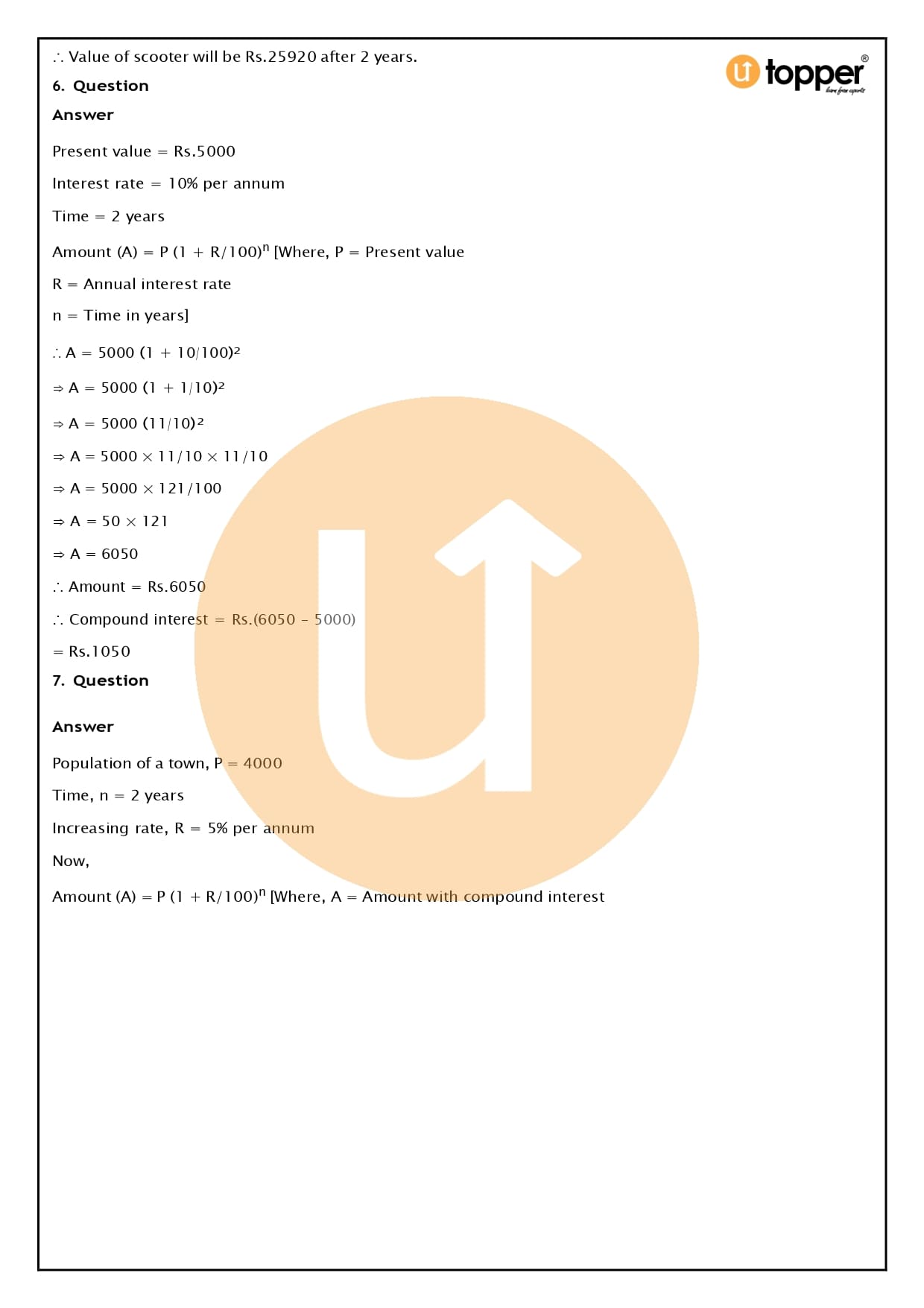

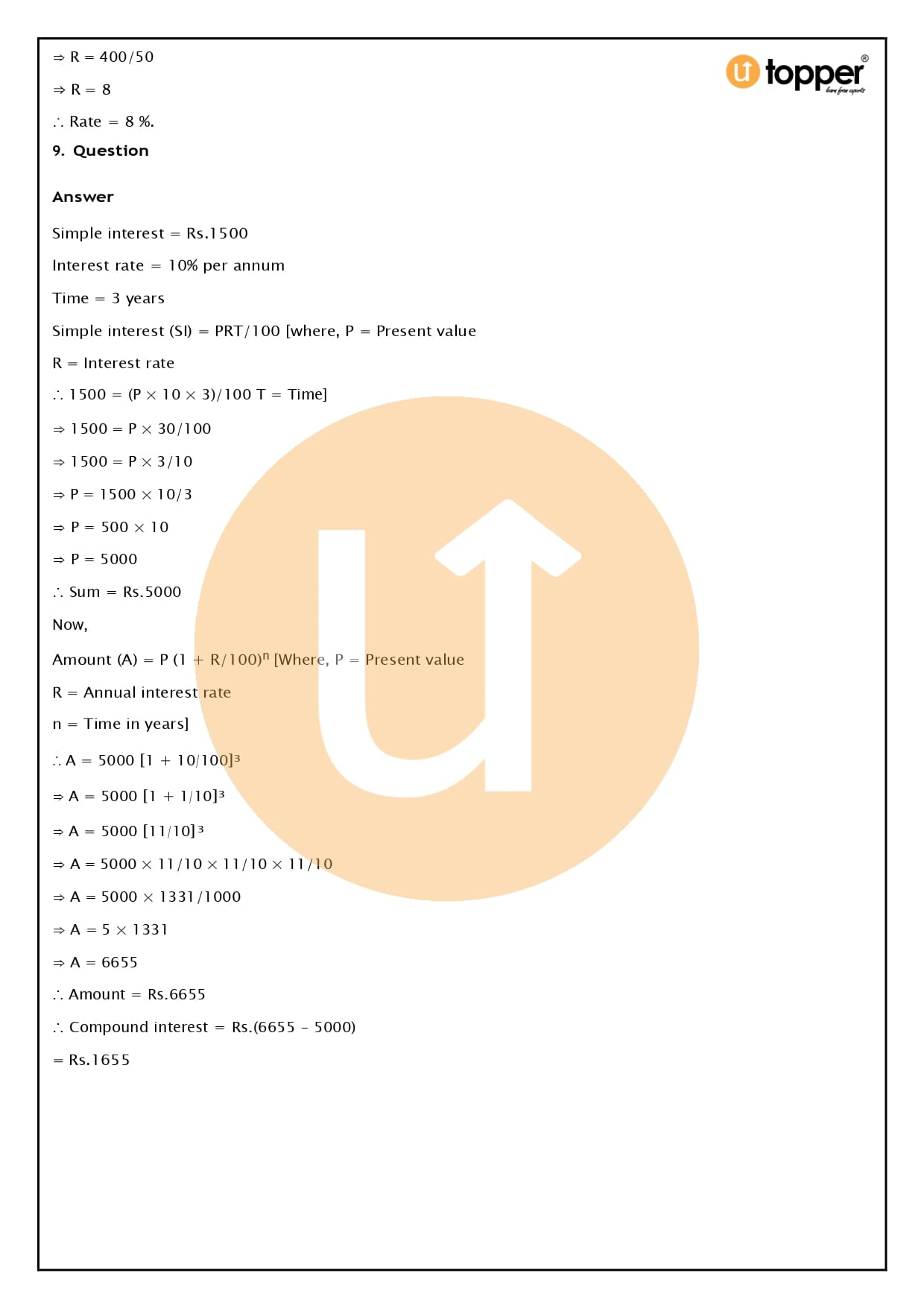



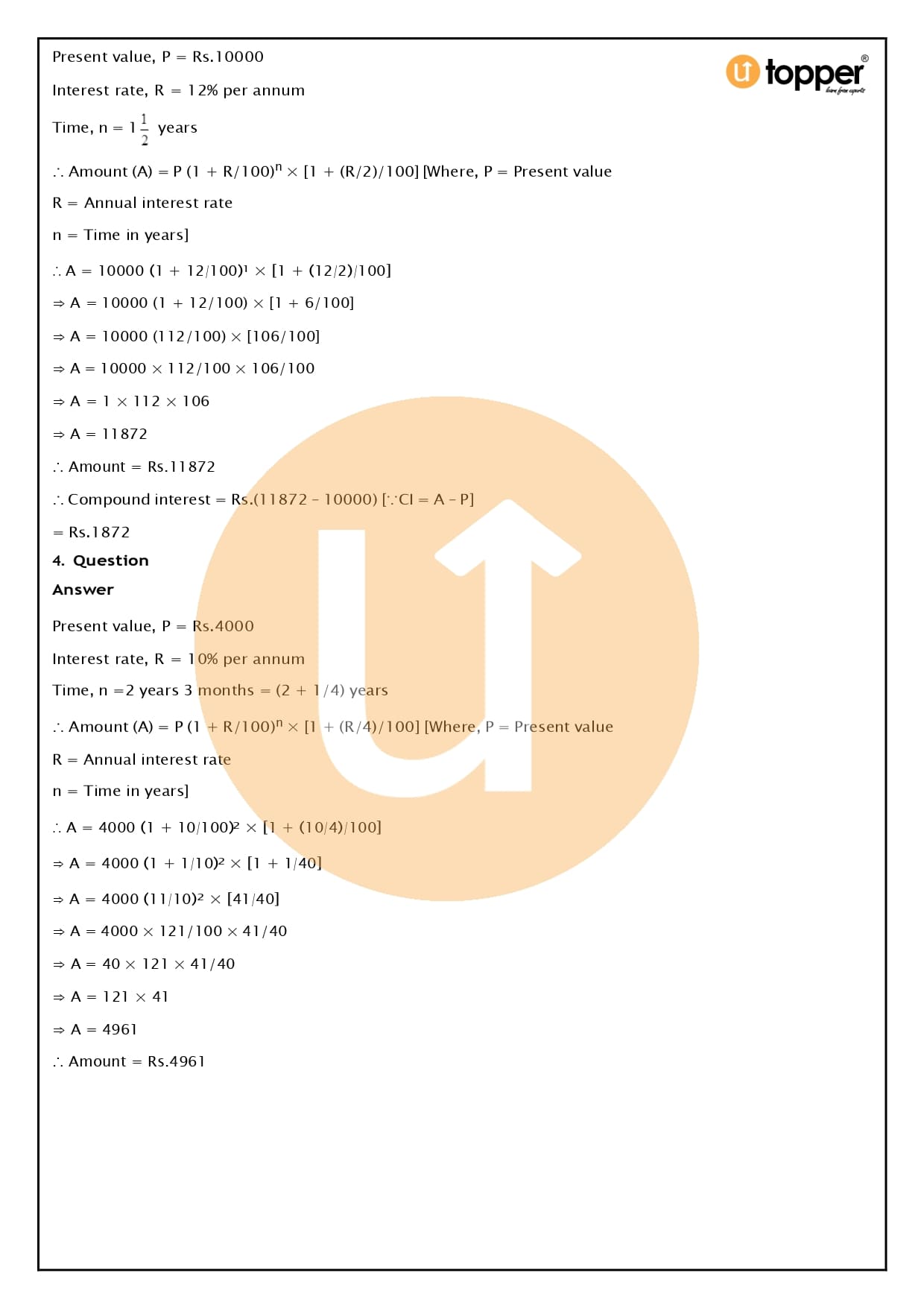








RS Aggarwal Class 8 Solutions
Chapter-1 Rational Numbers
Chapter-2 Exponents
Chapter-3 Squares and Square Roots
Chapter-4 Cubes and Cube Roots
Chapter-5 Playing with Numbers
Chapter-6 Operations on Algebraic Expressions
Chapter-7 Factorisation
Chapter-8 Linear Equations
Chapter-9 Percentage
Chapter-10 Profit and Loss
Chapter-11 Compound Interest
Chapter-12 Direct and Inverse Proportions
Chapter-13 Time and Work
Chapter-14 Polygons
Chapter-15 Quadrilaterals
Chapter-16 Parallelograms
Chapter-17 Construction of Quadrilaterals
Chapter-18 Area of a Trapezium and a Polygon
Chapter-19 Three-Dimensional Figures
Chapter-20 Volume and Surface Area of Solids
Chapter-21 Data Handling
Chapter-22 Constructing and Interpreting Bar Graphs
Chapter-23 Pie Charts
Chapter-24 Probability
Chapter-25 Graphs

Why was Utopper best for RS Aggarwal Class 8 Solutions Compound Interest?
Utopper is a place where students can find all kinds of free resources whenever and wherever they want. Students just need to sign up for an account, and then they can download the files to their computers. It also gives students free access to NCERT Solution and other study materials. You can also get Other Reference Solutions for Class 8 Math and Class 8 Science to help you review the whole curriculum and get better grades on your tests.
Math Chapter 8: An Overview of Compound Interest
Compound interest can be worked out by adding up the principal and the interest that has been earned over time. It’s different from simple interest because the interest doesn’t get added to the principal when the interest for the next period is calculated. In math, C.I. is often used as a shorthand for compound interest. Compound interest is a term used in math to talk about how interest builds up over time.
Different situations call for different ways to figure out how to calculate compound interest. We can use the formula for compound interest to make math easier. To figure out the interest on the interest, we need to know the amount and the principal. It’s the difference between how much you owe and how much you owe in total.
Compound Interest
Compound interest is calculated in a similar way to simple interest since the principal (the amount on which interest is calculated) is renewed every year. Once you put money in a bank, you will get interested in it every year. This doesn’t stay the same from year to year, but it does go up. For example, to figure out the interest on Rs 1000 over two years at a rate of 10% per year, we must add up the interest for each year.
Simple Interest
It is a quick way to figure out how much you still owe on a loan. Simple interest is a concept that is used in many different fields, such as banking, finance, and cars. When you pay back a loan, the interest is taken out first, and then the rest goes to the principal. In this post, we will look at the definition, the simple interest formula, and how to figure out simple interest.
Important Formulae
Compound Interest = Amount – Principal
- CI = A – P
- A: The amount
- P: Principal
- R: Interest Rate
- T: Time
Exercise Discussion for Class 8 Maths Chapter 11: Compound Interest by RS Aggarwal
- All four of the RS Aggarwal Class 8 Solutions Chapter 11 exercises are very important because they help you go over the whole idea of compound interest more than once.
- Exercise 11A has eight questions that are easy to answer. You just need to use the formula to figure out the simple interest and the compound interest.
- Exercise 11B has 30 questions that are a little bit harder than Exercise 11A. Here, you get more than one interest rate for the questions. In some questions, you are given the value of the final amount after interest is added, and you need to figure out what the original amount was.
- Exercise 11C only has ten-word problems, while Exercise 11D has fifteen. All of them have to do with finding the interest on interest.
- Practicing these exercises will also help you get better at math so you can do better on tests.

FAQ ( Frequently Asked Questions )
1. Where can I find more information about Compound Interest for RS Aggarwal Class 8 Solutions?
Ans – Utopper offers a lot of different things, such as notes, Reference Book Solutions, exemplar solutions, practice exercises, and much more. And the best part is that it doesn’t cost anything. Now, students from anywhere in the world can get the information they need any time, any place. The information that Utopper gives out is very carefully chosen by our experts.
2. Is Class 8 NCERT Maths Compound Interest a tough chapter?
Ans – Compound interest means that each time interest is paid on a savings account or debt, the interest on the interest also earns interest. The idea is simple and easy to understand, and it doesn’t take long to grasp. With the help of the notes that Utopper has put together, it will be easier to understand how the ideas work. They are free to use and can be found on our website.
3. In Class 8 NCERT Maths Compound Interest, how many exercises are there?
Ans – In the NCERT chapter on Compound Interest, there are about four exercises. These exercises are set up so that students can test what they have learned. They cover almost all of the ideas and principles in the chapter. Along with these exercises, there is also a different exercise to do if you want to get better at solving difficult problems.
